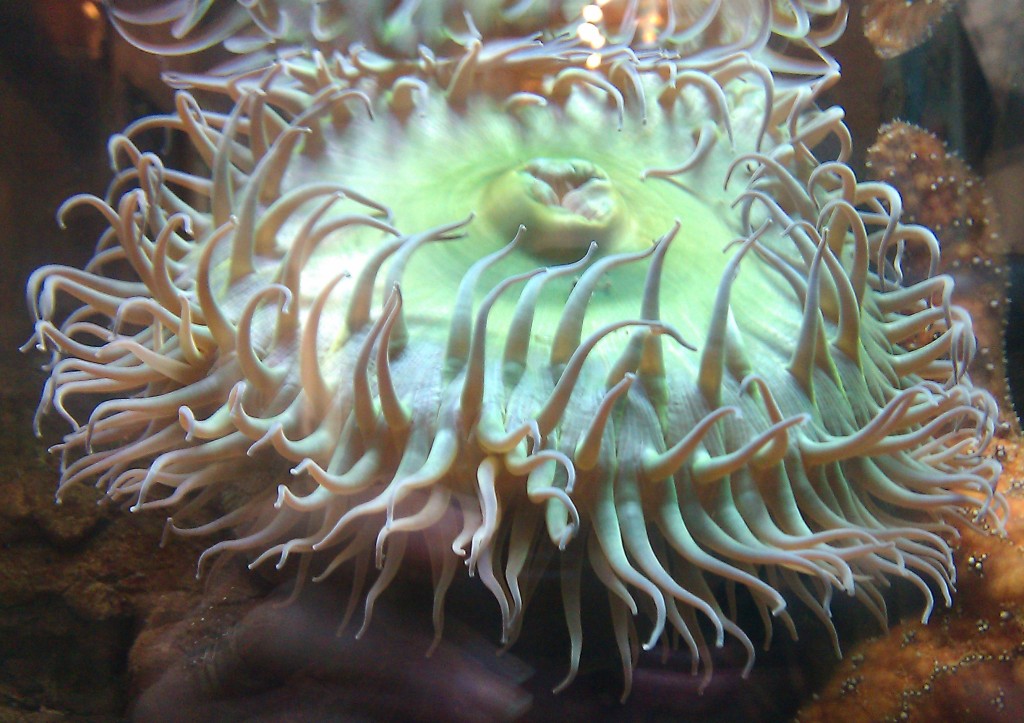
Green sea anemone
What makes a green sea anemone green? It’s not green with envy, it’s green with algae!
Single-celled algae living in the tissue of this sea anemone contribute in an indirect way to its brilliant green color. Green sea anemones or Anthopleura xanthogrammica enjoy the nutritional benefits gained from hosting algae through photosynthesis.
In return, algae benefit from having a safe place to live protected within the stinging tentacles of a sea anemone. Since both parties benefit, this is officially referred to as a mutualistic symbiotic relationship.
Now here’s the interesting part: Algae doesn’t actually turn a sea anemone green. In order to successfully host algae, green sea anemones must live in shallow waters within reach of the sun to provide light to fuel algae’s photosynthesis. The green color is a pigment produced by the sea anemone to block harmful radiation from the sun; it’s their version of sunscreen. Here’s the explanation from The Light and Smith Manual Intertidal Invertebrates from Central California to Oregon Fourth Edition edited by James T. Carlton (p. 176), “The green color, however, is not that of the algae, but is produced by the animals. The pigment functions to block potentially harmful radiation.”
Green sea anemones living in caves or under piers don’t have access to light and aren’t able to host algae. Sometimes these anemones are almost completely white because they don’t need to produce that protective green pigment.
So a green sea anemone is truly green with algae, not green from algae…a subtle and interesting difference.
[…] (For more information about sea hares, check out my post 7 cool sea hare facts and for more information about green sea anemones check out my post What makes a green sea anemone green?.) […]